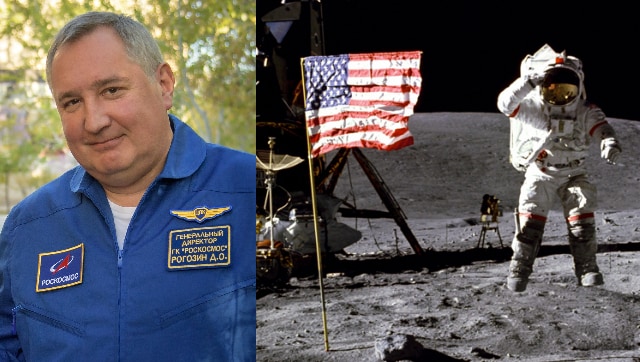At first it was a little tricky, but in trying to figure out how to keep up with the crew and to lead what they were doing, you had to kind of anticipate what was going on. If you watched some of the television, you will notice that when the crewmen started to move, the camera didn't start to move, it started to open up. If you look at the pictures, you'll notice that the first thing it would hit would be a zoom function, and you'll notice it on the TV. If you look at it, you'll notice that as soon as he started to move, I would hit zoom out. What that would do would give me a chance to stay with him, because the picture was opening up, and then I could see if he was moving left or right, and then start moving the camera. Then if he would stop, I could zoom back in. If you take a look at the pictures, knowing that that's what was going on, the secret was in using the zoom. The zoom allowed you to breathe. In other words, by opening up, you could see it. Because what you saw was three seconds old, see. So that's the way you were able to kind of stay with it.
The other thing you had to watch out for was the light, like I told you. The light was crucial. Because you'd get this big bloom. In some of those pictures you'll see this big strobe of light coming in there, and that's what that is, because the sun is incredibly bright with no atmosphere and everything.
After a while, it became real easy, but you really had to pay attention. You couldn't stop and think, and you couldn't stop and go to the bathroom, and you couldn't do too much talking with anybody else, but you had to monitor the other comm systems, too, but you had a back room. But you really had to pay attention. If you went through six hours of that, you were really tired. It really wore you down, because it was constant. The only time you got to take a breath is when they started to move, and they took over the rover, and that was like your break time, like, "I'm going to the bathroom, quick. I'll be back." And that's what you got. But it was real intense.
The other thing that I'll explain to you how it worked, and it's a little interesting, is you've seen this picture where the lunar module lifts off and the camera follows it. Well, on 15, the motor burned out and we couldn't do that. On 16, the rover was not parked in the right place, so consequently we missed it.
Now, the way that worked was this. Harley Weyer, who worked for me, sat down and figured what the trajectory would be and where the lunar rover would be each second as it moved out and what your settings would go to. That picture you see was taken without looking at it at all. There was no watching it and doing anything with that picture. As the crew counted down, that's a [Apollo] 17 picture you see, as [Eugene A.] Cernan counted down and he knew he had to park in the right place because I was going to kill him, he didn't—and Gene and I are good friends, he'll tell you that—I actually sent the first command at liftoff minus three seconds. And each command was scripted, and all I was doing was looking at a clock, sending commands. I was not looking at the television. I really didn't see it until it was over with and played back. Those were pre-set commands that were just punched out via time. That's the way it was followed. That's the way it followed it.
On that same mission we tried to track it back in. I don't know whether you know that or not. You know, the lunar module crashed back in. There was a scientist who wanted to see it coming back in, and then they were going to look on the seismometer, whatever you call it, and get that data and so on. But everything that was figured out or whatever, we never saw it. But that's the way that was done, but it wasn't done by looking at the camera, at the picture at all. It was all done via time.


